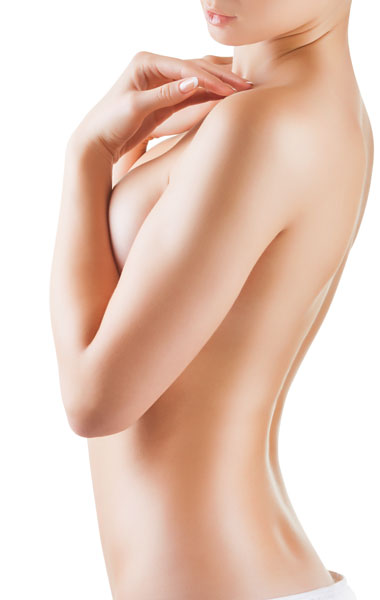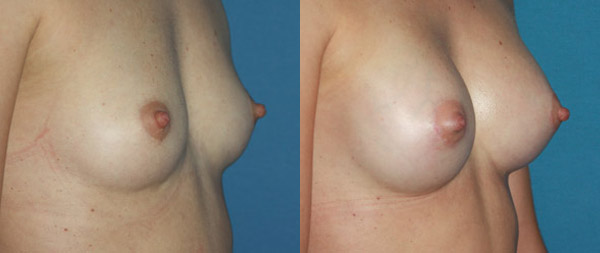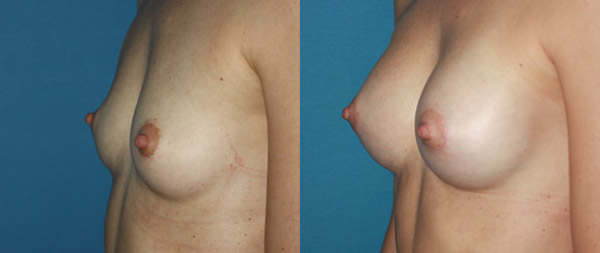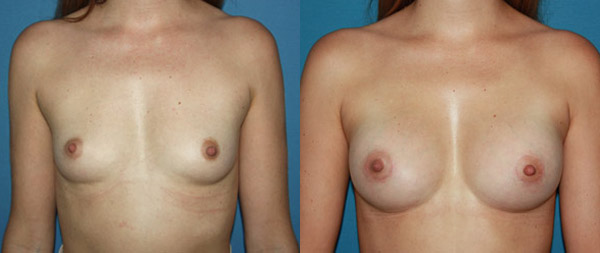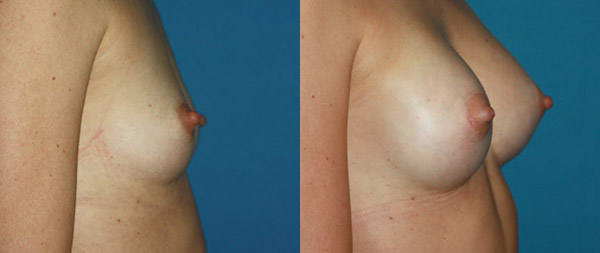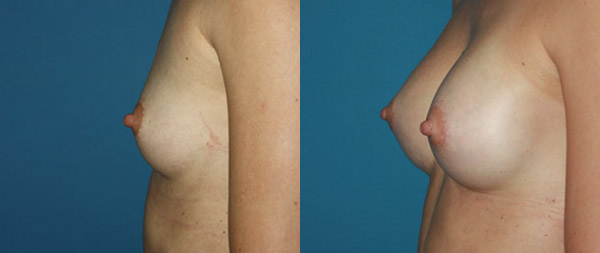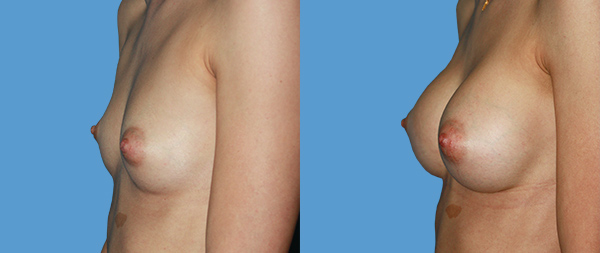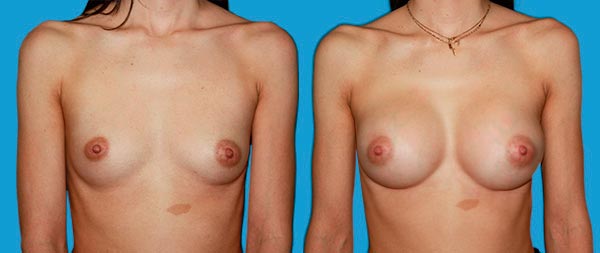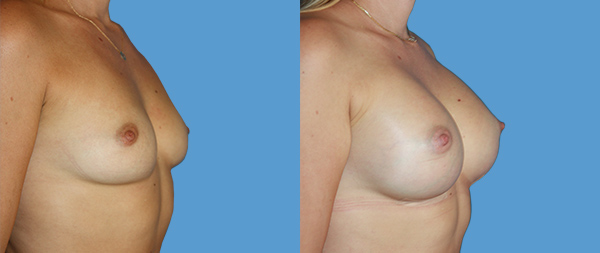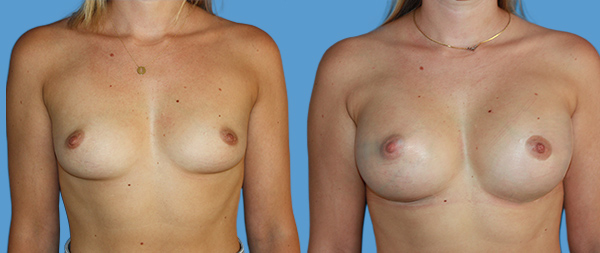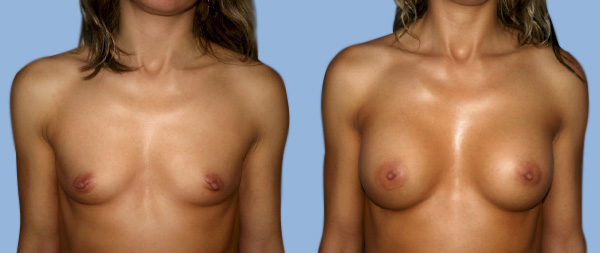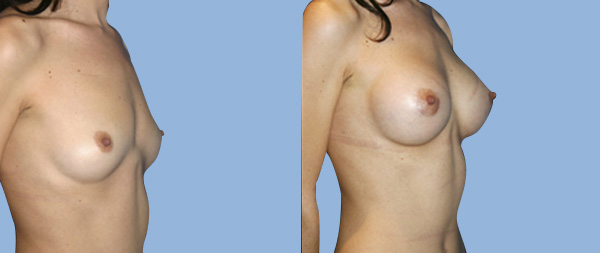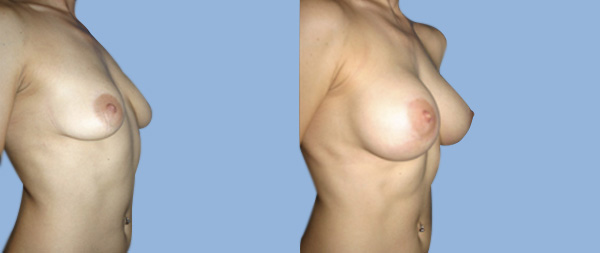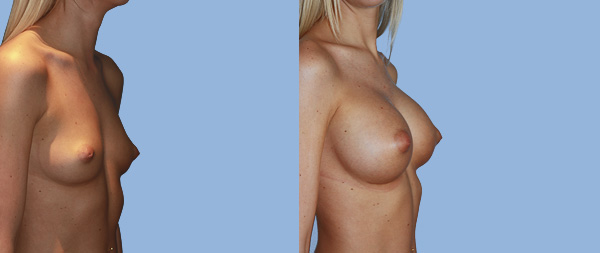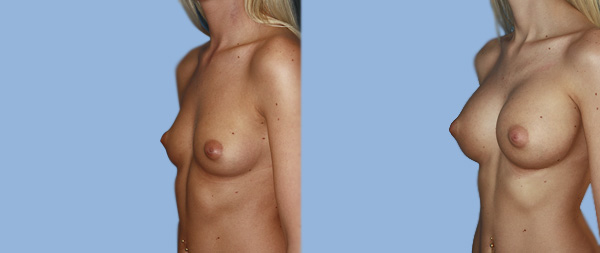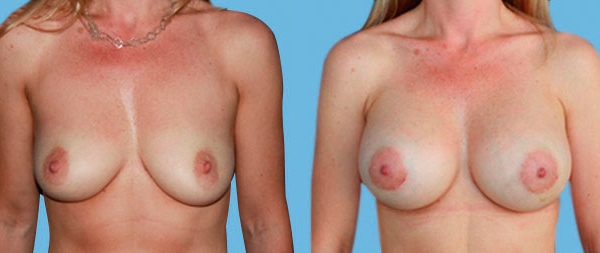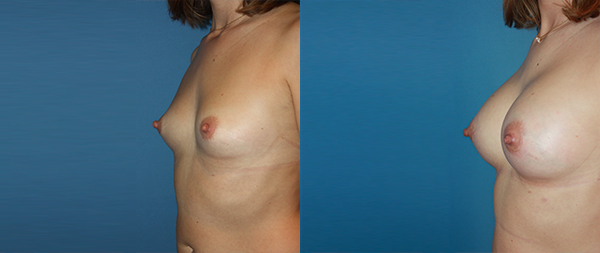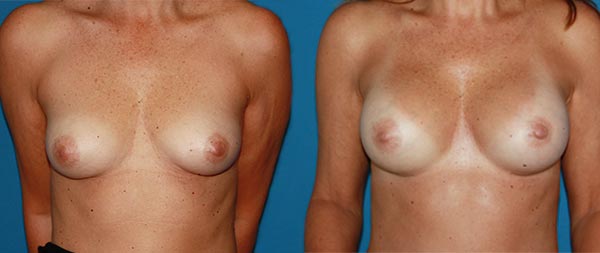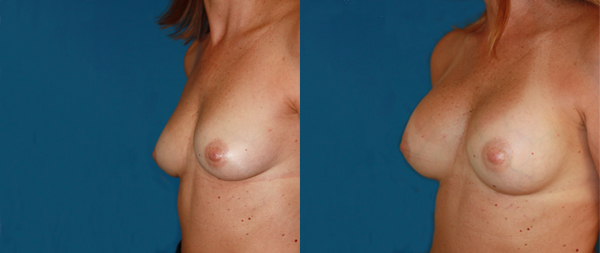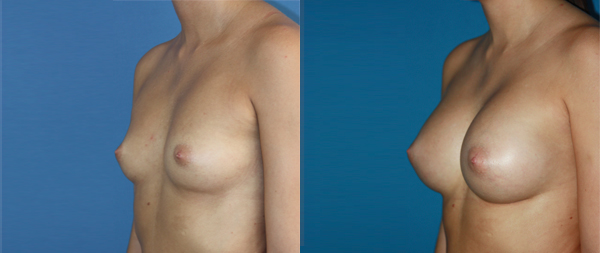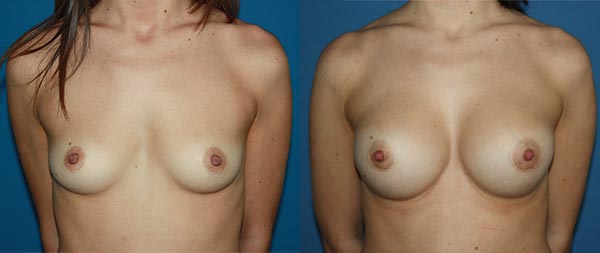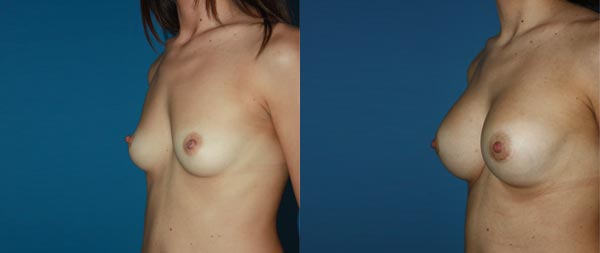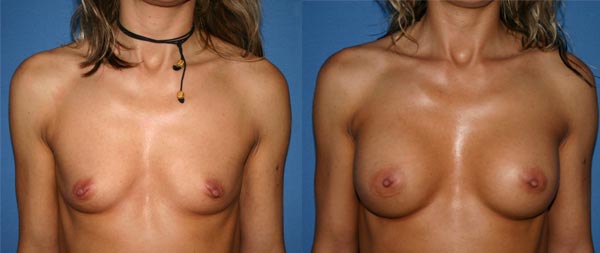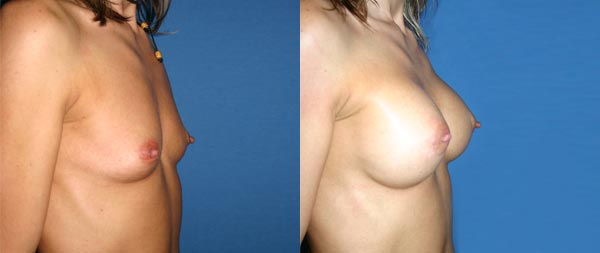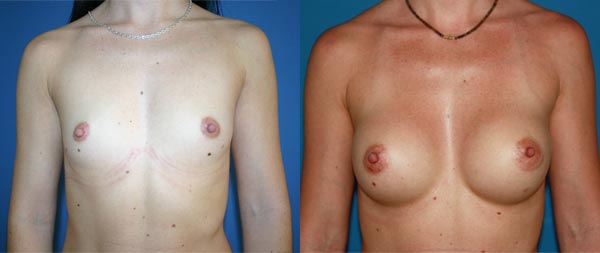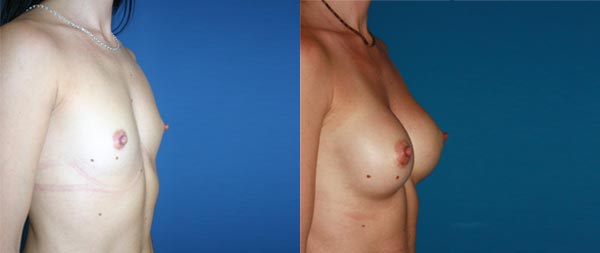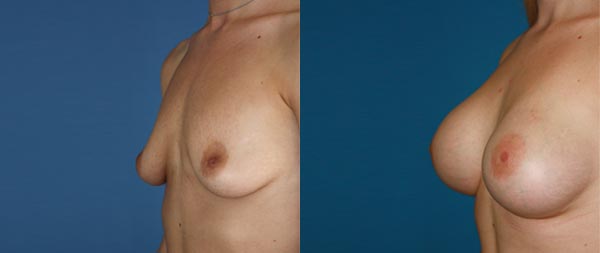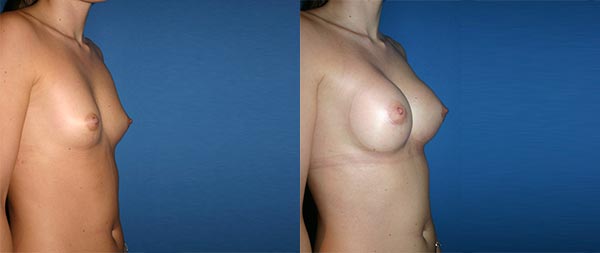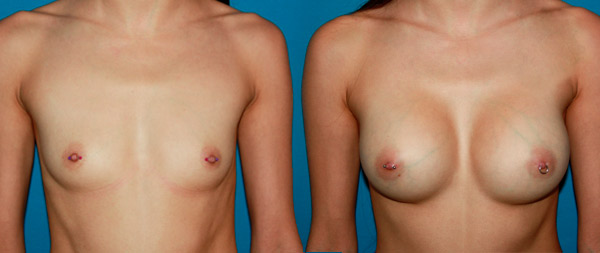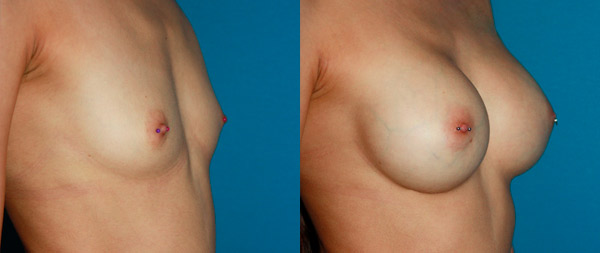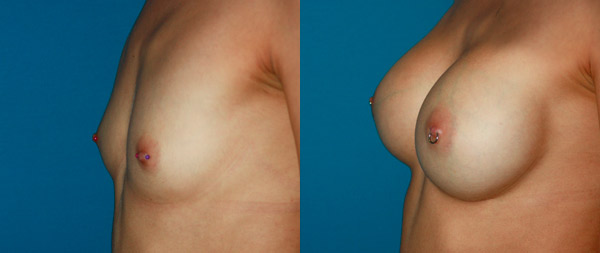Breast augmentation
Increase the volume of your chest naturally with silicone prostheses or with fat from your own body
Breast surgery is the most sought-after in Spain and worldwide. Breast augmentation is done to increase breast size and to give breasts a more aesthetic appearance that is proportionate with shape with the body.
Breast augmentation is an operation that gives excellent results and can be performed at any age, achieving a beautiful and natural looking breast.
WE SELECT THE BEST BREAST PROSTHESES FOR YOUR SAFETY
The breast prostheses that we use for this type for intervention are usually with a nanotexture or smooth surface, being the most recommended, and they vary according to the type of filling.
There are two types of breast fillings, one of serum and another of silicone, although the ones that are mostly used are of silicone. Nowadays, the manufacture of these prostheses has advanced a lot and they are much safer and perfect than years ago.
The shapes of the prostheses can be round, anatomical ( tear drop-shaped) and ergonomic. The latter are the most perfect prostheses, since they adapt to the natural movements of the body and acquire maximum naturalness.
Another very important caracteristic is that because of the type of wrapping with which they are manufactured, they do not have the risk of encapsulation. The choice of the implants depends on the patient’s breast shape and the surgeon’s advice, considering as well the existing breast tissues. In Instituto Pérez de la Romana we use erconomic type of prosthesis.
THE FIRST INTERVIEW WITH THE SURGEON IS FUNDAMENTAL
We will listen to your wishes and expectations, and make a detailed study of your proportions to advise you the breast volume most appropriate to your outline . The surgeon will explain the best techniques and the goal to achieve in your case.
You will leave the consultation with all your doubts resolved.
WITHOUT GENERAL ANESTHETIC
Our anesthesiologists are trained at the best centres in the world to be able to perform this procedure with local anesthesia and sedation in total safety and comfort for the patient, allowing a prompt recovery.
WE GET THE BEST AESTHETIC RESULT IN EACH PATIENT
To do this, we perform periareolar incisions in some cases when the patient wants to have the incision in this area and the areola is large enough. The mammary gland must also be large to hide the prosthesis completely.
The residual incisions in the areola of the breast are imperceptible.
In other cases when the patient is very slender and does not have enough breast tissue, the incision will be made in the submammary furrow. This will not be perceptible either, and the prosthesis will be placed under the pectoral muscle to hide the boundary of the prostheses and to ensure that they are completely undetectable.
In all cases we are looking for the best result: the most natural-looking breasts and hidden, almost invisible scars.
LIFETIME GUARANTEE FOR OUR BREAST PROSTHESES IN THE EVENT OF BREAKAGE
We use cutting-edge prostheses that have passed all EC quality controls. We are so confident in them that we offer you a LIFETIME GUARANTEE on our prostheses.
ANNUAL CONTROLS
For your safety, we perform annual breast ultrasound controls carried out by our specialist in gynecology and breast pathology.
WHAT IS BREAST AUGMENTATION WITH OUR OWN FAT?
It is a new breast augmentation technique called lipofilling (or fat grafting), which consists of vacuuming fat from the body and injecting into the breast. It may be used for aesthetic purposes simply to increase the volume of one or both breasts, to achieve greater symmetry, or to rebuild a breast that has been removed in full or in part.
IT IS DONE IN THREE STEPS
1
Fat cells are obtained from the patient, in particular from the hip, abdomen or thigh areas.
2
The treatment of this fat to purify it through centrifugation and decantation.
3
The grafting of fat cells in all areas of the breast, via small cannulas to get the desired shape.
THE ADVANTAGES OF USING ONE’S OWN FAT
- The breast has a totally natural feel.
- There are no visible scars anywhere , either on the donor or the recipient.
- It reduces the size of other unwanted areas, such as the hips.
THE MOST IMPORTANT INSTRUCTIONS FOR THIS TECHNIQUE
The instructions for this breast augmentation technique using the fat of the patient are:
- It is for patients who only want and need a small augmentation, such as one size or half a size.
- It is suitable for the correction of breast asymmetry.
- It is suitable for patients who do not want prostheses or have rejected implants.
In many cases, we use fat to complement a breast augmentation for very thin people in which we want to camouflage the outside edges of the prosthesis.
In these thin patients, creases or wrinkles (reepling) occur with some frequency. These creases and wrinkles are also corrected by lipofilling.
It is also important to use them when prostheses are removed and in secondary corrections, when the results have not been perfect.
POST-OPERATIVE
Patients must wear a compression band for one week. They can resume their normal routine from that week onwards.
REAL-LIFE CASES - DR. PEREZ DE LA ROMANA
BEFORE-AND-AFTER PHOTOGRAPHS OF REAL-LIFE BREAST AUGMENTATIONS
Click on the buttons to see the before-and-after comparison.
BEFORE-AND-AFTER PHOTOGRAPHS OF REAL-LIFE BREAST AUGMENTATIONS USING THE FAT OF THE PATIENT
Click on the buttons to see the before-and-after comparison.
SEE MORE REAL-LIFE CASES OF BREAST AUGMENTATIONS WITH PROSTHESES
FAQS
What type of anesthetic is used in breast surgery?
In most breast-related procedures, local anesthetic and sedation are used. This anesthetic is the smoothest and safest: the patient falls asleep but not a deep sleep and continues to breath on their own, and they feel no pain. The awakening process is fast and pleasant.
General anesthetic can be used only in complicated cases, such as secondary breast surgery.
When should anatomical or round prosthetics be used?
Prostheses are now made to be more perfect than before and offer a whole range of options in terms of size, shape. Above all, the quality of the materials is safer than years ago.
Prostheses can be round or anatomical (teardrop-shaped). The height or width of the prosthesis can be chosen according to the measurements of the patient.
Anatomic prostheses are better for thin patients with little breast tissue and fat, to produce a more natural result.
Round prostheses are more recommended in patients who have abundant breast and fatty tissue. They are also recommended for patients who want a breast with a round shape.
Both types of prostheses produce excellent results. The most important thing is to take into account the tissues and the wishes of the patient.
Can I breastfeed with implants?
Mammary prostheses do not interfere at all with breastfeeding, since the implants are positioned behind the mammary gland.
If I have breast implants, can I get pregnant?
A woman who has breast prostheses can become pregnant and carry a child to term and give birth without problems.
However, you should know that the skin of the breast becomes distended during pregnancy and, in particular, during nursing due to the increase in the volume of the breast and can cause slight changes in the shape of the breast once it returns to its resting state.
When should I change my implants?
In principle, breast prostheses are for life but over time they tend to age. They should be changed in the event of breakage or encapsulation, or when the patient decide to change volume.
¿Se pueden romper los implantes?
Although it is very rare and infrequent, the outer membrane of prostheses can break with the passage of time. Current prostheses have a thicker outer casing that makes it more unlikely that the membrane will break and silica gel is highly cohesive, making it impossible to escape.
At the Instituto Pérez de la Romana we recommend an annual breast ultrasound, which is the best way to detect possible fractures.
Is there a relationship between breast cancer and prosthetics?
Breast implants do not produce breast cancer; nor is there any relationship between implants and breast cancer. There is enough clinical evidence to confirm that when a tumour appears in a breast with a prosthesis, the disease does not progress more and behaves exactly the same as when it appears in a normal breast.
At the Instituto Pérez de la Romana, our gynecologist performs ultrasound examinations and annual check-ups to detect the appearance of lumps in the breast.
What is capsular contracture?
It is a very rare condition with which some patients present after receiving breast prostheses.
It consists of a hardening of the breast and can occur in one or both breasts, although it is more frequent in just one. In these cases, you should inform the surgeon who will correct it.
How long after childbirth should I wait to get implants?
Once you have stopped breastfeeding and the mammary gland has recovered completely.
Will I lose sensitivity?
A reduction or increase in sensitivity is normal in the first weeks after surgery, whether in the areola or in the inframammary incision. This sensitivity is recovered completely in more than 99% of cases.
Are the scars noticeable?
The scars tend to have a pinkish color in the first two or three months after the procedure. These scars which usually disappear completely with time and with the care that we recommend.
Can breasts be augmented with fat? Lipofilling or prosthesis?
Although the most commonly-used breast augmentation technique is the insertion of implants, in recent years we have made extensive use of lipofilling, with very good results.
The choice of one technique or the other will depend on the anatomical characteristics of the patient, the existence of sufficient fat and the wishes of the patient.
How long after the procedure can I sunbathe?
At least two weeks after the procedure, provided that the scars are covered.
How long after a breast augmentation will I be able to exercise?
In the first week after the procedure, we recommend that the patient not make any broad arm movements or lift weight.
After a month, you will be able to exercise and even go to the gym.
Fat is extracted from which areas?
Normally from the areas where it is most abundant (usually the hips, abdomen, thighs and knees).
Is all the fat infiltrated?
Usually, 30% of the transplanted fat can be reabsorbed during the first three months. However, the other 70% remains.
What volume can be achieved?
While this depends on the amount of fat that can be drawn, it is normal that we insert 200-300cc in each breast. This technique is suitable when the patient does not require too much volume.
Can prostheses and fat be combined?
In cases where the patient is very thin and not we can get all the desired fat, we can combine a breast prosthesis with a fat graft to achieve a more natural result.
Does it affect the interpretation of mammograms and other diagnostic tests?
Using mammograms and other diagnostic tests, a distinction can be drawn between perfectly benign cysts and fatty tissue microcalcifications in the grafted area of a malignant tumor.
FREQUENTLY ASKED QUESTIONS ABOUT BREAST AUGMENTATION WITH FAT
Where is it extracted from?
Normally from the areas where it is most abundant (usually the hips, abdomen, thighs and knees).
Is all the fat infiltrated?
Usually, 30% of the transplanted fat can be reabsorbed during the first three months. However, the other 70% remains.
What volume can be achieved?
While this depends on the amount of fat that can be drawn, it is normal that we insert 200-300cc in each breast. This technique is suitable when the patient does not require too much volume.
Can prostheses and fat be combined?
In cases where the patient is very thin and not we can get all the desired fat, we can combine a breast prosthesis with a fat graft to achieve a more natural result.
Does it affect the interpretation of mammograms and other diagnostic tests?
Using mammograms and other diagnostic tests, a distinction can be drawn between perfectly benign cysts and fatty tissue microcalcifications in the grafted area of a malignant tumor.


